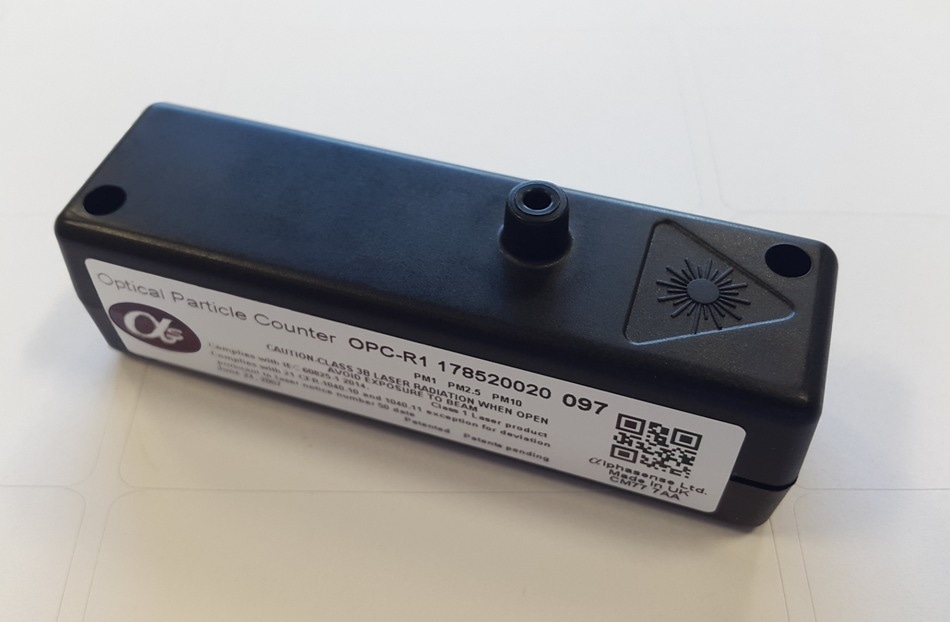At just over 7 cm wide and 2 cm high, the new OPC-R1 sensor from Alphasense is extremely small in comparison with previous technologies. However, with outputs for PM1, PM2.5, PM10 and histograms for up to 16 ‘bins’ the sensor provides considerable particulate monitoring capability. “The small size and weight of this sensor, coupled with a low power requirement, make it ideal for use in portable instruments,” comments Alphasense Director, Arthur Burnley.
 OPC-R1 sensor
OPC-R1 sensor
The OPC-R1 is an optical particulate sensor using laser technology to measure particles from 0.4 to 12.4 µm in diameter, based on a spherical equivalent size of 1.5 µm radius. The sensor is supplied with PC software and a specification sheet providing performance data demonstrating good correlation with a TSI DustTrak.
Typical power consumption during the measurement mode is just 95 mA and <5 mA with the laser on and the fan off. In addition to its compact size, the OPC-R1 weighs less than 30g and has an operating range of 0 to 95% (non-condensing) and -10 to +50 Deg C.
“In May 2018, the World Health Organisation published a report estimating that around 7 million people die every year from exposure to the fine particles that penetrate deep into the lungs and cardiovascular system, causing diseases including stroke, heart disease, lung cancer, chronic obstructive pulmonary diseases and respiratory infections, including pneumonia,” warns Arthur Burnley. “Consequently, there is a large and growing demand for monitoring technology to enable organisations and citizens to check the safety of locations and identify pollution hot-spots.
“We believe that the prospects for the new OPC-R1 sensor are extremely bright because instrument manufacturers are seeking to employ advanced, cost-effective technology to meet this rapidly growing demand.”
Full technical specifications for the new OPC-R1 are available from www.alphasense.com in addition to detailed information on the company’s other sensors.